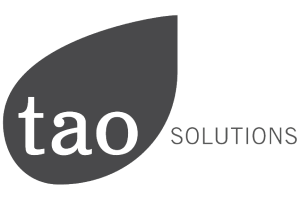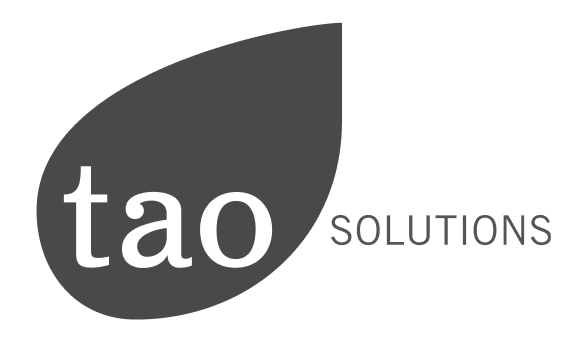What is Securitization?
Securitization is the pooling of underlying assets (homogenized loans) that are packaged and structured to support a stand-alone issuance to institutional investors. The aim of securitization is to pool illiquid monetary assets—often some form of loan like a mortgage, auto loan,credit card debt, or loan receivables to produce liquid instruments in the form of tranched bonds. Securitization software solutions (like the software provided by TAO Solutions) enables the end-to-end administration of all activities.
How does Securitization Software Work?
In securitization, there is an originator, the entity that creates the loan that is normally provided to a retail customer. As an example, if it were a bank, it would be lending money for mortgages and private loans. Over time, a portfolio of loans are created that can become available to support a securitisation transaction.
Securitization software establishes automated data interfaces between the originator’s servicing system and / or data warehouse to obtain the required loan portfolio information and operates in a similar manner to a special-purpose treasury management system. Both unfunded and funded loans can be allocated to the required securitization transactions in an automated fashion, including related reporting at the time of funding and monthly determinations.
Therefore, the ability to create a special purpose vehicle and reflect the various intricacies surrounding a structured finance / securitisation transaction needs to be incorporated into an enterprise system that is flexible, traceable, auditable and controlled to support industry needs.
A securitization software solution includes:
- Detailed analytics, dashboards and business intelligence solutions
- Funding optimization with references to eligibility criteria, portfolio parameters and detailed pool analysis (pre and post funding)
- Transaction structuring including waterfalls,instrument tranching, credit enhancements, trigger modeling, risk retention pieces
- Management reporting - ALCO, risk, compliance, finance, ESG
- Portfolio optimization and management
- Investor reporting at the time of funding (draw-down / top-up) and monthly / quarterly determinations, including HTT / HDT templates for covered bonds
- Rating agencies feeds - for pre-sale as well on on-going compliance requirements
- Regulatory reporting - involving multiple jurisdictions, currencies and instrument types
- Finance - accounting (journal entries, financial statements, bank reconciliations)
- ESG - incorporating ESG credentials at all levels of securitisation / structured finance activities
- Upstream reporting for capital calculations and IFRS requirements
- Third party feeds - Trustees, ABCP Conduits, Securitization Warehouse Lenders (senior, mezzanine and equity), Bloomberg, Intex, Trepp etc
In addition to the above, TAO Solutions has the world’s number one asset backed commercial paper (ABCP) and commercial paper (CP) administration software solution. This service can also be provided as a third party outsourcing solution.
TAO Solutions software can be used for asset-backed securities (ABS), mortgaged-backed securities (MBS), residential mortgage backed securities (RMBS), trade receivable securitizations and many other asset classes further explained below.
Asset-Backed Securities
Securitization will produce many alternative kinds of asset-backed securities. Often, a distinction is formed between asset-backed securities backed by pools of mortgages and different asset-backed securities created from different kinds of loans.
Mortgage-Backed Securities / Residential Mortgage-Backed Securities
Mortgage-backed securities, or MBS, are a unit of a particular form of asset-backed security created by packaging mortgages.
Asset-Backed Commercial Paper
An asset-backed commercial paper (ABCP) program is a short-term investment vehicle with a maturity date that is typically between 90 and 270 days. A bank or other financial institution typically issues the security itself. The notes are backed by physical assets (loans) such as auto loans, dealer floor plans, equipment finance, personal loans, credit card receivables, trade receivables. Companies will use an asset-backed commercial paper to fund short-term financing needs with funding provided by the capital markets.
Commercial Paper
The primary difference between commercial paper (CP) and asset-backed commercial paper (ABCP) is that commercial paper is not backed by assets. Commercial paper (CP) is a money market security issued by large corporations to raise money to meet short-term obligations. With a fixed maturity of less than one year, the commercial paper acts as a promissory note that is backed only by the high credit rating of the issuing company.
Benefits of Securitization
The process of securitization creates liquidity by providing institutional investors the ability to purchase shares in instruments that have been created within a special purpose vehicle.
Securitization will produce liquidity for monetary establishments as a result they'll unlock assets on their balance sheets and provide an alternative funding source, a cheaper cost of funding, access to investors that would otherwise not be the case and alternative duration in the debt maturity profile.
Real-World Examples of Securitization
A US Investment Bank offers investors 3 kinds of mortgage-backed securities referred to as specialty products. All the mortgages underlying these product areas are units backed by government-sponsored enterprises (GSEs). This secure backing makes these products among the better-quality instruments of their kind. The MBSs embrace those offered by:
- Government National Mortgage Association (GNMA): The U.S. government backs bonds secured by Ginnie Mae. GNMA doesn't purchase, package, or sell mortgages, however it will guarantee their principal and interest payments.
- Federal National Mortgage Association (FNMA): FNMA purchases mortgages from lenders, then packages them into bonds and resells them to investors. These bonds are unit secured by FNMA.
- Federal equity credit line Mortgage Corporation (FHLMC): FHLMC purchases mortgages from lenders, then packages them into bonds and resells them to investors.
Growth of Securitization Issuance Activity
Since the global financial crisis, the landscape of securitization issuance activity has gained material momentum. Wholesale funding provided via bank balance sheet warehousing facilities has seen increased issuance activities by unrated and non-investment grade lenders and corporates. This has also been supported by bank issuances at all levels.
The new global industry benchmark for securitization, structured finance and ESG software as a service solution catering for issuers, aggregators, lenders, ABCP conduits, trustees and regulators.
Multi-jurisdictional, asset class agnostic SaaS software solution addressing the complex requirements involving end-to-end administration and regulatory reporting requirements for the financial services industry.
Canada's mortgage funding and portfolio management software as a service solution built for issuers and aggregators.
Representing the de facto standard for mortgage securitization, structured finance and covered bond SaaS software solutions in Canada.
LeaseSpark is a cloud SaaS application that improves the efficiency of your daily equipment finance operations, making it easier to originate, administer and manage deals throughout their lifecycle.
Contact Us
By submitting this form, I agree to receive communications from TAO in connection with my inquiry. My information will be processed in accordance with TAO's Privacy Policy.




